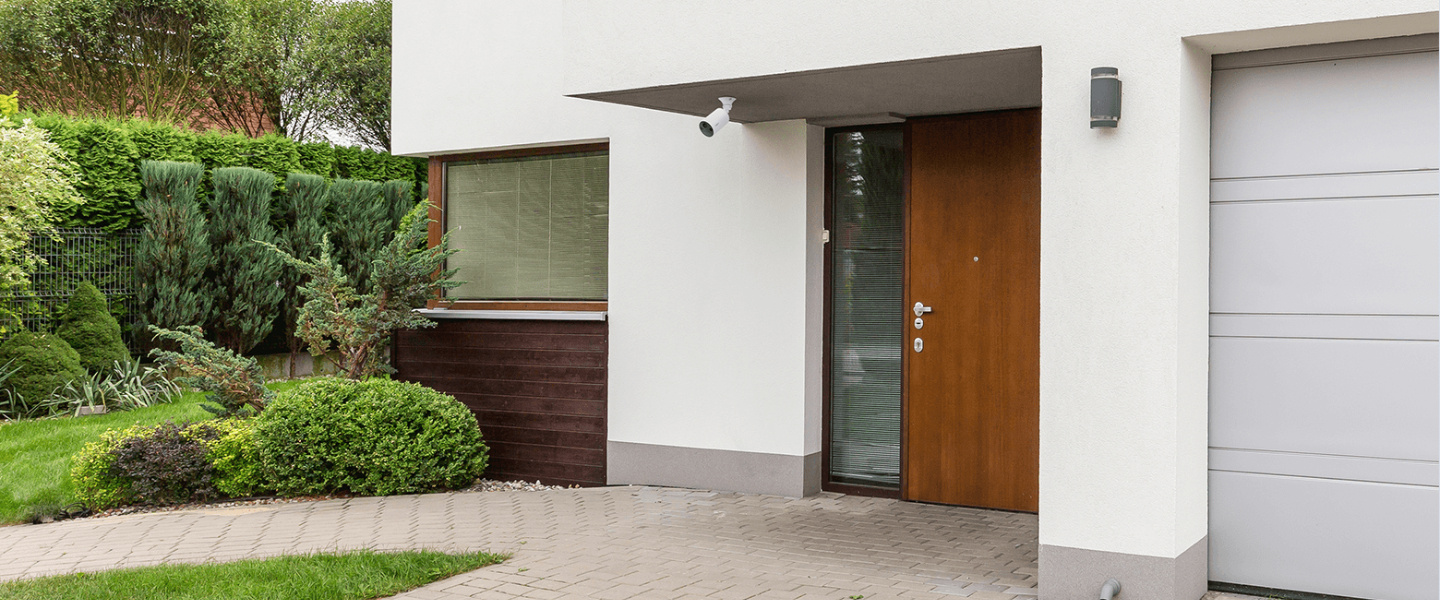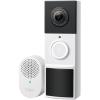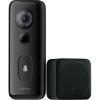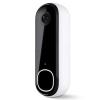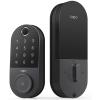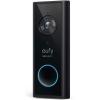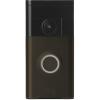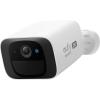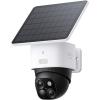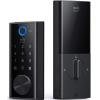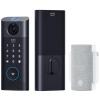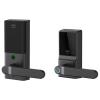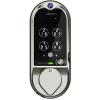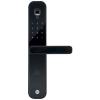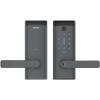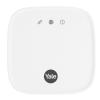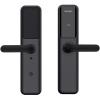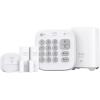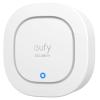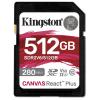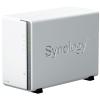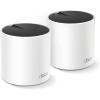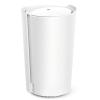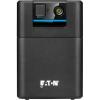Keeping your home safe is a lot easier these days. Gone are the days of leaving the TV on to make it seem like someone is home. From video doorbells that let you greet visitors from anywhere, to smart locks, cameras, and even floodlights that scare off intruders before they try anything - modern security is smarter, faster, and easier to set up than ever.
The best part? You don’t need to be a tech expert or spend a fortune to make a big difference. In this guide, we’ll break down the essentials - what really works, what’s worth adding, and how to avoid common mistakes. Plus, we’ll share some of our favourite product picks so you can shop with confidence.
No matter what your living situation looks like, these tips will help you build a setup that fits your space, your budget, and your peace of mind.
Build Your Risk Map
Before you start reaching for your wallet, spend 10 to 15 minutes doing a full security walkthrough of your property. This is called building your risk map, and it’s the foundation of a smart home security plan. The goal is simple: identify where someone could get in, where they could hide, and what areas are most vulnerable. If you skip this step, you risk spending money on the wrong products or leaving blind spots uncovered.
Start by grabbing a notebook or your phone and sketching a quick layout of your home and overall property. Walk around the outside first, then inside. Ask yourself:
- If I were trying to break in, where would I start?
- Which doors or windows look easiest to force open?
- Where could someone approach without being seen?
- Are there areas that stay dark at night?
Key areas to check and why they matter:
Front door: This is still the number one entry point for burglars. If it’s poorly lit, has no camera, or uses an old lock, it’s a prime target.
Back door and side gates: These spots are often hidden from the street, giving intruders more time to work without being noticed.
Garage: Garages often contain tools that can help break into the main house, and some have internal doors that aren’t as secure as the front.
Low windows: Especially those behind shrubs or fences. They’re easy to force open and hard for neighbours to see.
Driveway and porch: Where parcels sit in plain sight. Package theft is becoming more of an issue in NZ too.
Dark corners: Any area that stays unlit at night is an opportunity for someone to hide or approach unseen.
Once you’ve mapped these, decide what each spot needs:
See: Cameras or video doorbells so you can monitor activity in real time and review recordings later.
Hear: Chimes, sirens, or two-way audio to let you respond instantly and make intruders think twice.
Warn: Motion-activated lights, clear signage, and visible cameras to deter before a break-in attempt happens.
Pro tips to make this exercise count:
Do the walkthrough twice: once in daylight and once after dark. You’ll notice different vulnerabilities at night, like blind spots or areas where lighting doesn’t reach.
Check from the street: Stand where a passer-by would and see what’s visible. Are valuables in plain sight through windows? Is your security gear obvious enough to deter?
Think about delivery habits: If parcels are often left on your porch, that’s a risk point that needs coverage.
Note power and Wi-Fi: While mapping, check where you have power outlets and Wi-Fi coverage. This will influence whether you choose wired or wireless gear.
This simple planning step saves money, reduces frustration, and ensures you cover the real risks first instead of buying gadgets that may not solve your biggest problems.
Video Doorbells
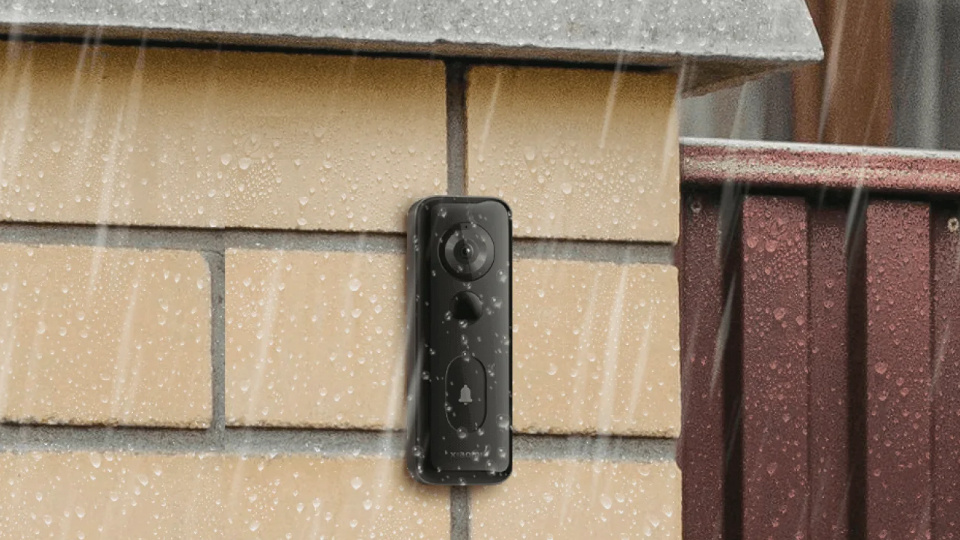
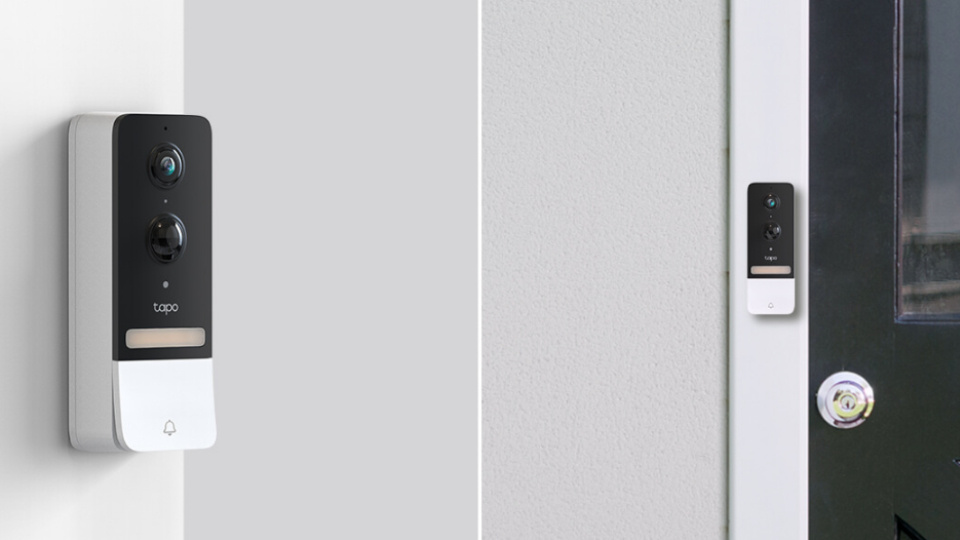
If you only add one smart security device, make it a video doorbell. It’s the easiest upgrade with the biggest impact because it covers the most common entry point: your front door. A good video doorbell acts as your eyes and ears, letting you see who’s there, talk to them, and keep an eye on deliveries - even if you’re halfway across the country.
Why video doorbells matter:
- Most burglars still knock or ring before trying a door. A visible doorbell camera makes them think twice.
- Package theft is on the rise. A doorbell lets you confirm deliveries and deter porch pirates.
- It’s a strong deterrent because it’s obvious and hard to miss.
Core features to look for:
- Live video and two-way talk: Answer from your phone, whether you’re in the kitchen or on holiday.
- Motion alerts: Get notified when someone approaches, even if they don’t press the bell.
- Delivery monitoring: Some models can detect parcels and send specific alerts.
- Night vision: Essential for 24/7 coverage - look for colour night vision if possible.
Buying tips and what they mean for you:
Power: Battery-powered models are renter-friendly and easy to install with no wiring. Wired models never need charging but require existing doorbell wiring or an electrician.
Storage: Cloud storage is convenient for viewing clips anywhere, but usually comes with a monthly fee. Local storage (microSD or a hub) avoids ongoing costs and keeps footage private.
Privacy: Look for motion zones and masking so you’re not filming your neighbour’s property. This keeps you compliant with NZ privacy rules and avoids complaints.
Ecosystem: Make sure it works with your smart home platform - Google Home, Alexa, Apple Home, or Matter for future-proofing.
Field of view: 150 degrees or more is ideal for tight porches and tall parcels. A wider view means fewer blind spots.
Extra considerations:
- Check your Wi-Fi signal at the front door. If it’s weak, you’ll need a mesh system or extender for reliable alerts.
- Think about chimes: Some models include a wireless chime for indoors, while others require you to buy one separately.
- Battery life varies. Some last months, others need charging every few weeks, depending on motion activity.
- If you live in an apartment or shared space, confirm installation rules with your landlord or body corp.
Pro tip: Position the doorbell at chest height for the best face capture and avoid pointing it directly at bright sunlight to prevent glare.
Security Cameras
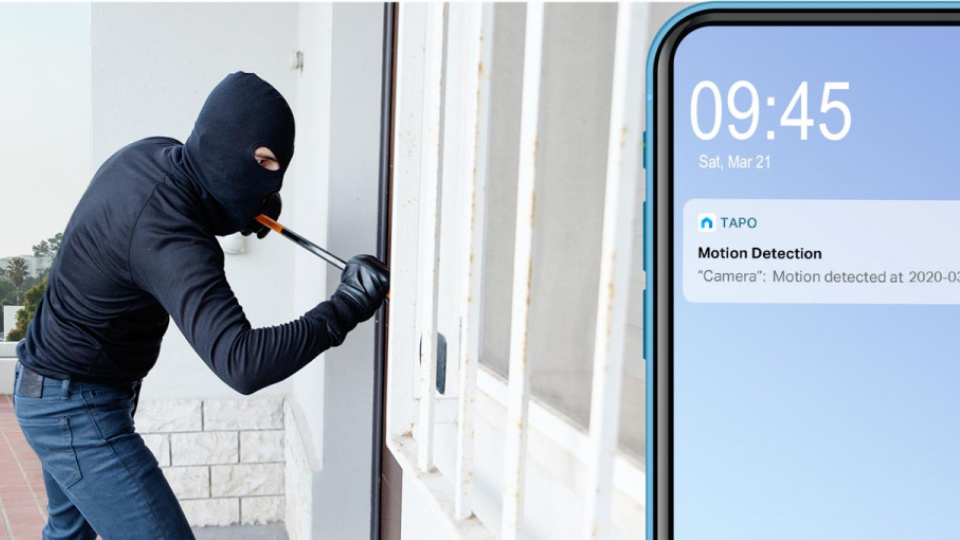

Cameras are your second layer of defence after a video doorbell. They give you visibility across your property, let you check in anytime, and provide crucial evidence if something happens. Modern cameras are smarter than ever, offering features that make monitoring easier and more accurate.
Why cameras matter:
- They deter intruders just by being visible.
- They help you verify alerts from sensors or doorbells.
- They provide proof for insurance or the police if an incident occurs.
What today’s cameras can do:
- AI detection for people, vehicles, and packages so you’re not bombarded with false alerts from pets or swaying trees.
- High resolution (2K/4K) for sharp detail - important for identifying faces or licence plates.
- Colour night vision for better identification after dark.
- Local or cloud storage options so you can choose between convenience and privacy.
Placement tips:
- Cover every entry point: front, back, and side doors should all be in view.
- Overlook the driveway and garage - these are common targets for theft.
- Indoors, place one near valuables or in a main hallway to track movement.
- Mount at eye level for clear facial recognition, not high up like a floodlight.
- Use privacy zones to block out neighbours’ property and stay compliant with NZ privacy rules.
Choosing the right camera:
Power: Wire-free cameras are easy to install and move, perfect for renters or quick setups. PoE (Power over Ethernet) wired cameras are more reliable for permanent installations and don’t rely on Wi-Fi. Solar-powered cameras are also a great option when possible, especially for areas where running cables is tricky - just make sure the panel gets enough sunlight.
Weather rating: For outdoor use, look for IP65 or higher to handle rain and dust.
Integration: Make sure your cameras work with your doorbell and app so you can manage everything in one place.
Extra considerations:
- Check Wi-Fi coverage where you plan to install cameras. Weak signal means delayed alerts or dropped footage.
- Decide on storage before you buy. Cloud is simple but adds monthly costs; local storage avoids fees but needs a microSD card or NVR.
- Look for two-way audio if you want to speak to visitors or warn off intruders.
- Some cameras include built-in spotlights or sirens for extra deterrence.
Pro tip: Avoid pointing cameras directly at bright lights or reflective surfaces. Glare can ruin your footage, especially at night.
Smart Locks


Smart locks are one of the most practical upgrades you can make for both security and convenience. No more hiding keys under mats or worrying about lost copies floating around. With a smart lock, you control access from your phone and can see exactly who comes and goes.
Why smart locks matter
- They make it easy to let in guests, cleaners, or tradies without handing over a physical key.
- They add peace of mind with auto-lock features so you never wonder if you locked the door.
- They eliminate the risk of spare keys being stolen or copied.
Features to consider:
Unlock options: PIN codes, fingerprint scanners, smartphone apps, or even your smartwatch. Some models support multiple methods for flexibility.
Auto-lock and unlock: The lock can automatically secure itself when you leave and unlock when you return, using geofencing or Bluetooth.
Temporary codes: Perfect for Airbnb hosts, cleaners, or family members visiting. You can set codes to expire after a certain time.
Integration: Check compatibility with your smart home system - Google Home, Alexa, Apple HomeKit, or Matter for future-proofing.
Battery backup: Most smart locks run on batteries. Look for low-battery alerts and emergency power options so you’re never locked out during a power cut. Smart locks typically include backup keys too, so a power cut isn’t always cause for panic - well, not smart-lock-related panic at least.
Extra considerations:
- Check your door type and thickness before buying. Some locks only fit standard doors.
- Decide if you want a deadbolt replacement or a retrofit model that works with your existing hardware.
- Deadbolt replacement: Removes your old deadbolt and installs a full smart lock - ideal for a complete upgrade with features like fingerprint access and built-in Wi-Fi.
- Retrofit model: Attaches to the inside of your existing lock, so you keep your original key and exterior hardware - perfect for renters or quick installs.
- Look for tamper alerts and activity logs so you know if someone tries to force the lock.
- Some premium models include built-in cameras or fingerprint readers for extra security.
Pro tip: If you’re pairing a smart lock with a video doorbell, choose models that work in the same app for a seamless experience.
Alarm Kits and Sensors
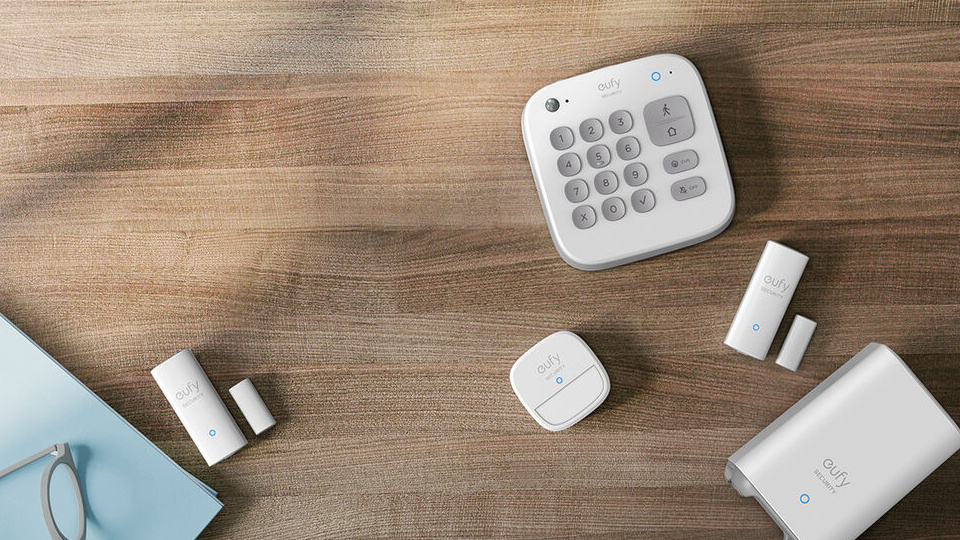
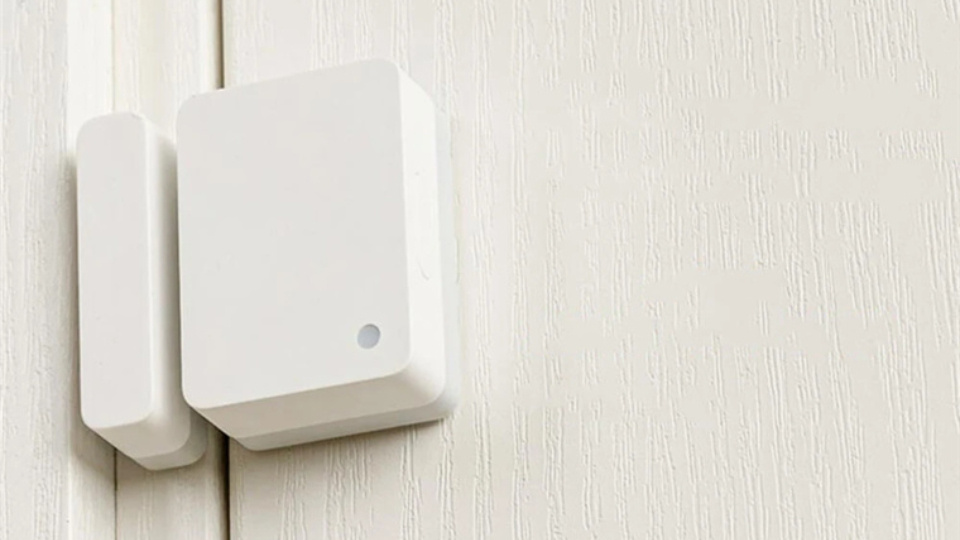
Alarm kits and sensors form the backbone of a smart security system. These compact devices act as your early warning network - detecting doors opening, windows breaking, or unexpected movement - so you can respond before a break-in happens. When paired with cameras and sirens, they create a layered defence that’s hard to beat.
Why sensors matter:
- They detect entry attempts immediately, even before someone reaches your valuables.
- They’re affordable and easy to install, making them a great first step for renters and homeowners alike.
- When paired with cameras and sirens, they create a layered security system that’s hard to beat.
Common types of sensors:
Door and window contact sensors: These trigger when a door or window is opened unexpectedly. Perfect for main entry points and ground-floor windows.
Motion sensors: Detect movement inside your home when the system is armed. Ideal for hallways or large open areas.
Glass break sensors: Trigger if a window shatters, adding an extra layer of protection for homes with large glass doors or windows.
Sirens: Loud enough to startle intruders and alert anyone nearby. Some kits include built-in sirens, while others let you add them separately.
What to look for in a good alarm kit:
Integration: Choose a kit that works with your cameras and app so everything is controlled in one place.
Expandability: Make sure you can add extra sensors later as your needs grow.
Connectivity: Wi-Fi kits are easiest to set up, but some offer cellular backup for extra reliability.
Battery life: Long-lasting batteries mean less maintenance. Look for low-battery alerts in the app.
Smart features: Some kits allow automation, like turning on lights when a sensor is triggered.
Extra considerations:
- Place contact sensors on all main doors and any windows that could be used for entry.
- Use motion sensors in hallways or living areas, not near heating vents or curtains that move in the breeze.
- If you have pets, look for pet-friendly motion sensors to avoid false alarms.
- Test your system regularly to make sure alerts are working and sirens are loud enough.
Pro tip: Combine sensors with visible deterrents like signage and cameras. Most intruders will move on when they see a property that looks well-protected.
Lighting and Sirens
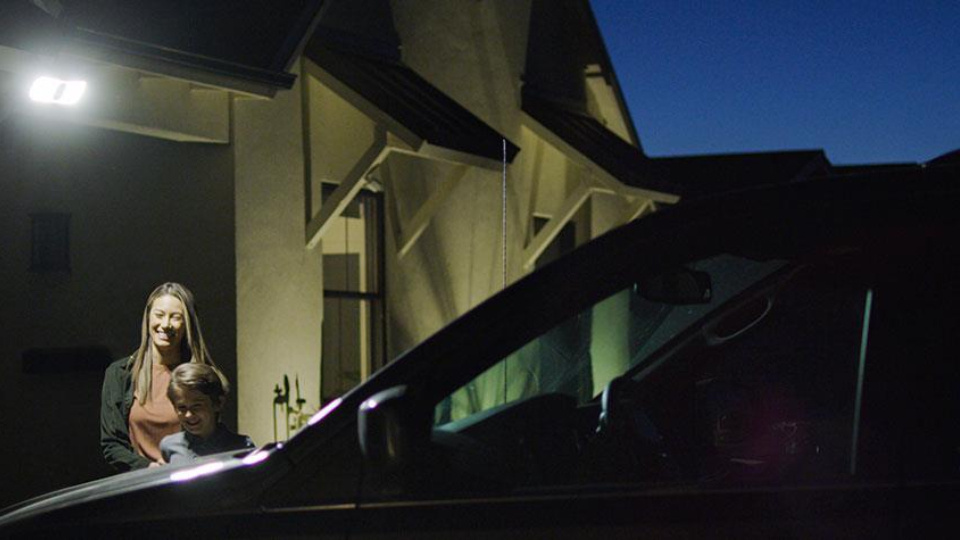
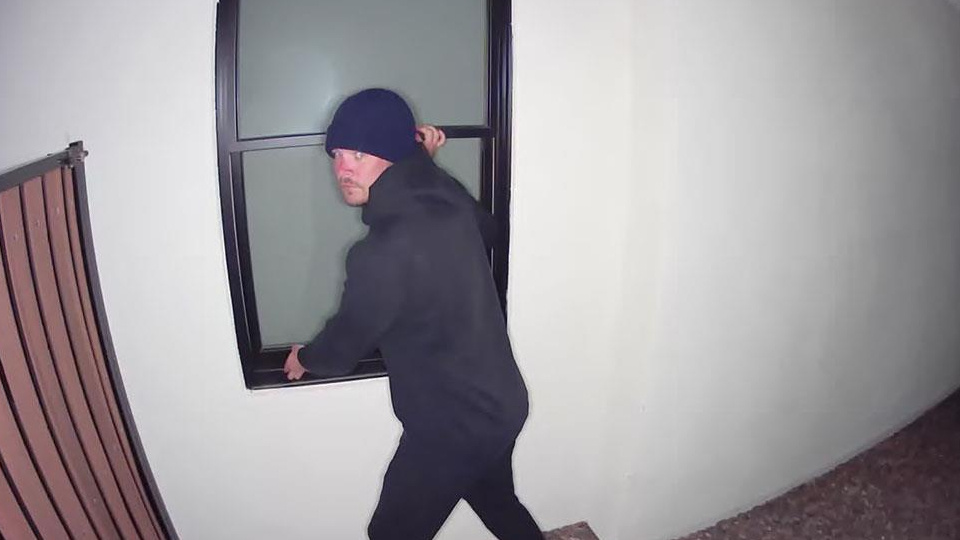
Sometimes the simplest security measure is also the most effective. A bright light can make an intruder think twice before approaching your property. Add a siren, and you’ve got a strong deterrent that can stop a break-in before it starts. The goal here is visibility and noise - two things burglars hate.
Why lighting matters:
- Criminals prefer darkness. A well-lit property removes their cover.
- Motion-activated lights surprise intruders and draw attention to movement.
- Lights also make your cameras more effective by improving image quality at night.
Why sirens matter:
- A loud siren creates panic and forces intruders to leave quickly.
- It alerts neighbours and anyone nearby that something is wrong.
- Many modern sirens can be triggered automatically by sensors or cameras.
Options to consider:
Floodlights with built-in cameras: These combine lighting, video, and sometimes even a siren in one device. Perfect for driveways, backyards, and side entrances.
Motion-activated lights for dark corners: Affordable and easy to install, these lights turn on only when needed, saving energy while boosting security.
Smart lights you can schedule or control remotely: Great for creating the illusion that someone’s home, even when you’re away.
Extra considerations:
- Choose LED lights for energy efficiency and long life.
- Look for adjustable brightness and motion sensitivity to avoid false triggers from pets or passing cars.
- Some smart lights integrate with your security system, turning on automatically when a camera detects motion.
- If you’re adding a siren, check the decibel rating - 100 dB or more is ideal for outdoor use.
Pro tips:
- Aim lights across the area, not straight into the camera lens, to avoid glare and washed-out footage.
- Install lights high enough to prevent tampering but low enough to cover the target area effectively.
- Combine lighting with visible signage for maximum deterrence.
Storage and Retention
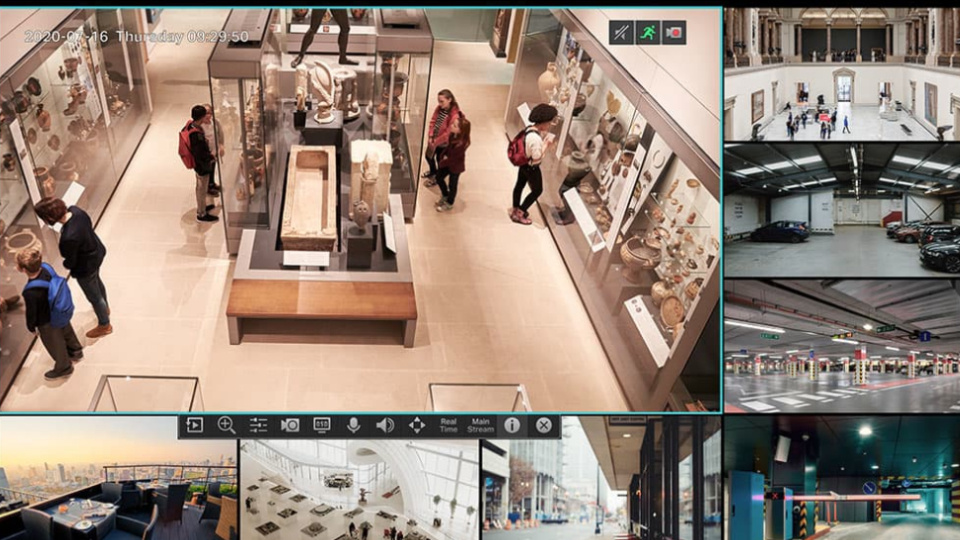
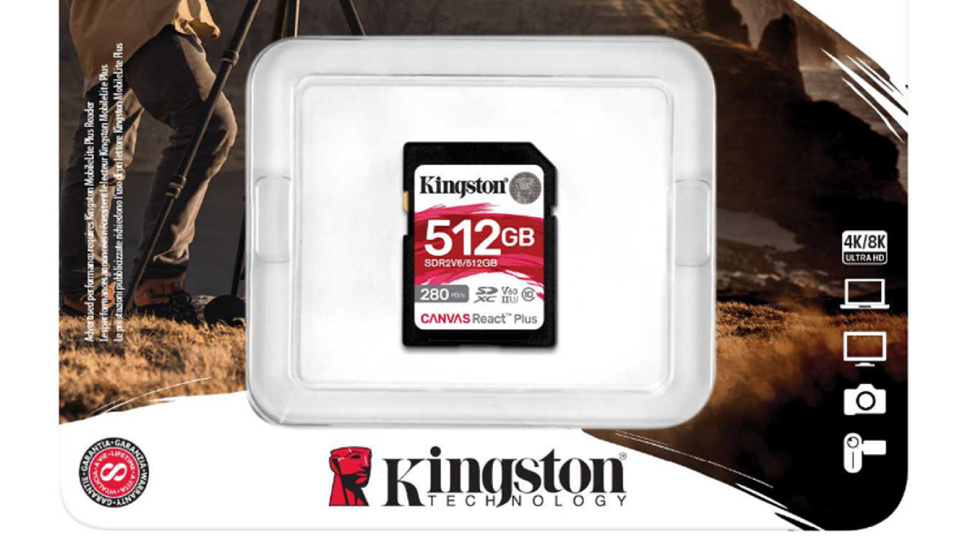
Don’t let storage scare you - it’s easier than it sounds. Most modern cameras make this almost hands-off. In fact, for most people, it’s as simple as choosing between two options:
Cloud storage: This is the “set and forget” option. You pay a small monthly fee, and your clips are stored online. You can view them anytime from your phone, share them easily, and never worry about running out of space. Many brands even offer a free basic plan for short-term storage (like 24 hours).
Local storage: If you’d rather avoid subscriptions, many cameras let you pop in a microSD card or connect to a small hub. It records everything right at home, and you can still view it through the app.
That’s it for most people - pick one and you’re done. No complicated setup, no tech headaches.
For those who want more control or have multiple cameras:
NVR (Network Video Recorder): Great for wired or PoE systems. It stores all your footage in one box and usually comes with its own app.
NAS (Network Attached Storage): The power-user option. Perfect if you want big storage, backups, and advanced features.
How long should you keep footage? Most people are fine with 7 to 30 days. After that, old clips can be deleted automatically. If you’re using cloud storage, this happens for you. If you’re using local storage, the camera usually overwrites the oldest files when the card is full - so you don’t have to lift a finger.
Bottom line: If you want zero hassle, go with cloud storage or a camera that includes free local storage. If you love tinkering and want total control, an NVR or NAS is there for you.
Network Reliability
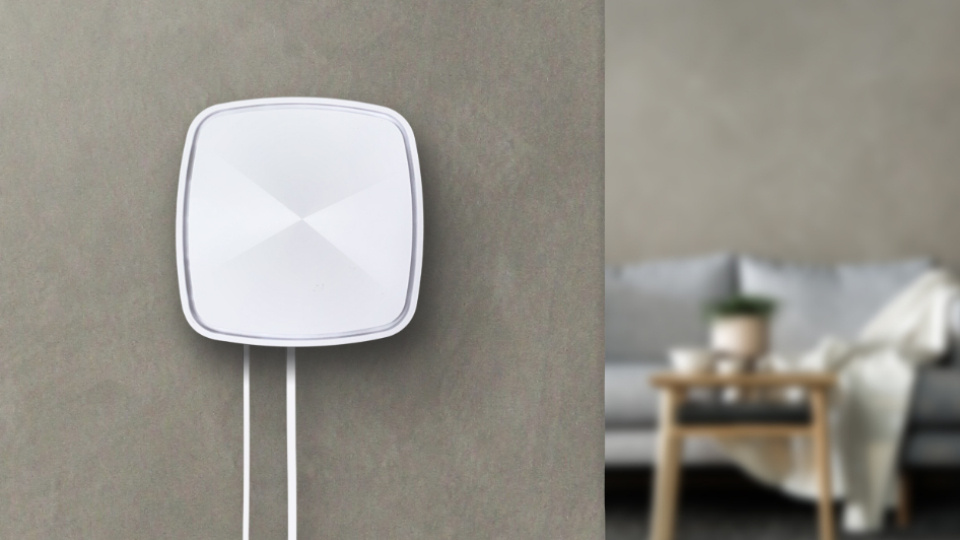
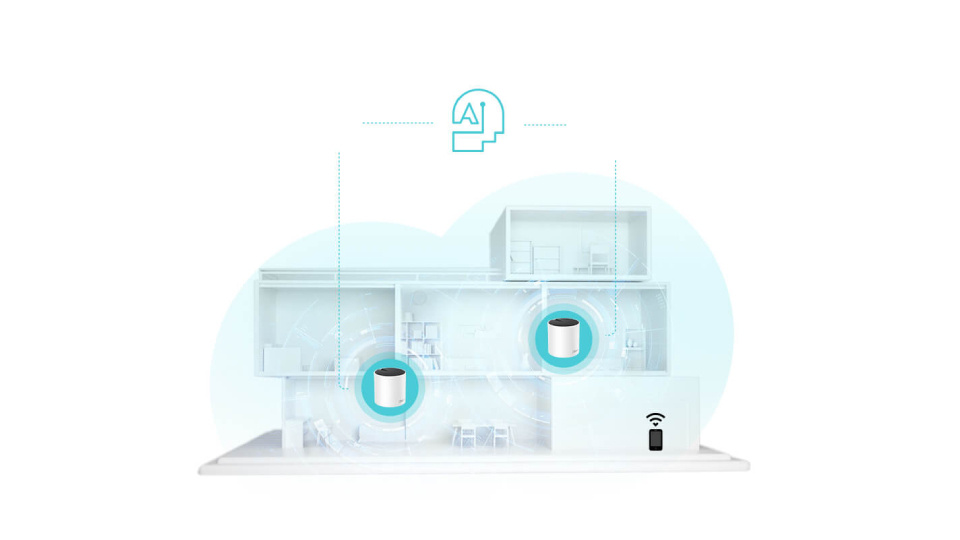
Your cameras and doorbells are only as good as your connection. If your Wi-Fi drops out or is weak in certain spots, your alerts will lag - or worse, you’ll miss them completely. The good news? Fixing this is easier than you think.
Why it matters:
- Cameras need a steady connection to stream video and send alerts.
- A weak signal means choppy video, delayed notifications, or cameras going offline.
- If your internet goes down, your whole system could be blind.
How to make it rock-solid:
- Mesh Wi-Fi systems: These are the easiest fix for dead zones. Instead of one router trying to cover your whole house, a mesh system uses multiple nodes to blanket your home in strong, consistent Wi-Fi. Perfect for larger homes or properties with tricky layouts.
- PoE (Power over Ethernet): If you’re going for a wired setup, PoE is the gold standard. One cable delivers both power and data, so your cameras stay connected even if Wi-Fi is patchy.
- 5G backup routers: Live in a rural area or have frequent outages? A 5G-capable router can automatically switch to mobile data when your main internet drops, keeping your security system online.
Pro tips:
- Test your Wi-Fi signal where you plan to install each camera. If it’s weak, fix that first.
- Place mesh nodes near problem areas like garages or outdoor spaces.
- If you’re using PoE, plan your cable runs before drilling - especially for multi-camera setups.
- Always test alerts on and off Wi-Fi to make sure you can access your system remotely.
Bottom line: A strong, reliable connection means your cameras work when you need them most. Spend a little time on this now, and you’ll avoid headaches later.
Power Backup
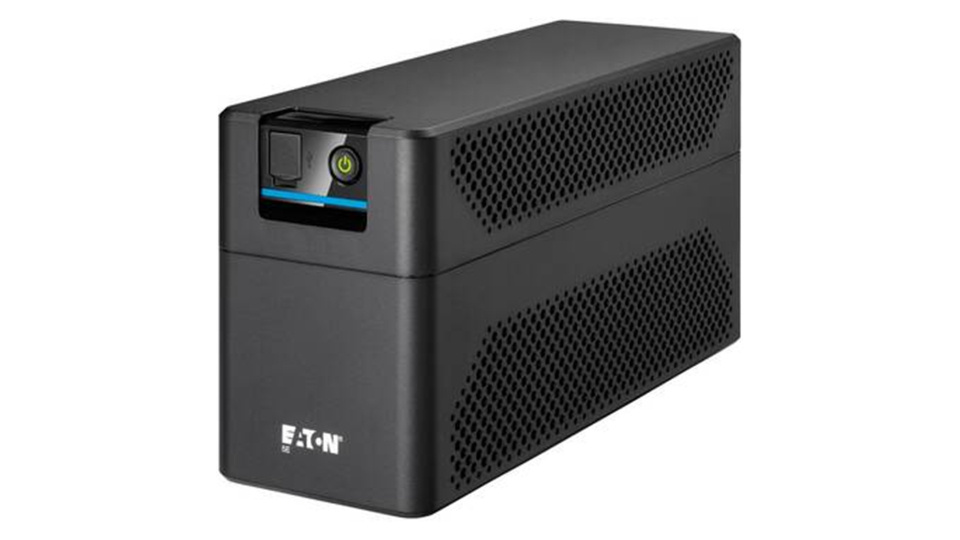
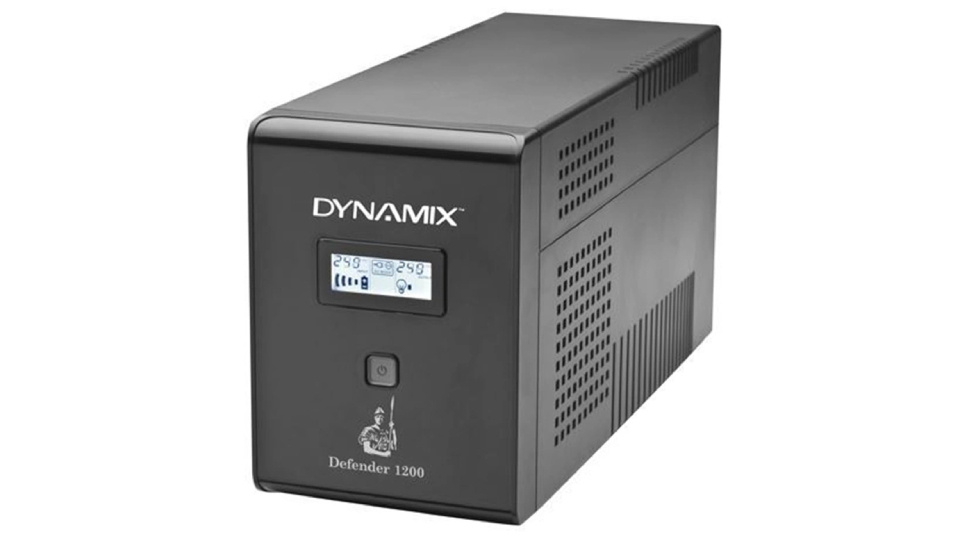
Your security system is only useful if it’s running. A short power cut can knock out your cameras, router, and storage - leaving you blind when you need protection most. The solution? A small UPS (uninterruptible power supply). It’s like a backup battery for your essential gear.
Why it matters:
- Even a 10-minute outage can stop recordings and disconnect your alerts.
- If your router goes down, your cameras can’t send notifications - even if they’re still powered.
- A UPS keeps everything running long enough for power to return or for you to take action.
What a UPS can keep alive:
Your modem and router: So your internet stays up and alerts keep coming through.
NVR or NAS: If you’re using local storage, this ensures your footage keeps recording.
Cameras: Some wired cameras can also run through the UPS if they share the same power source.
How long does it last?
- A small UPS can give you 20-60 minutes of backup for a modem and router.
- Larger models can power an NVR and multiple devices for an hour or more.
- For most homes, 30 minutes is enough to ride out short blackouts.
Extra tips:
- Plug in only the essentials - router, modem, and storage device - to maximise runtime.
- Check the UPS regularly to make sure the battery is healthy.
- Some UPS units include surge protection, which adds another layer of safety for your gear.
Bottom line: A UPS is a small investment that prevents a big vulnerability. It keeps your system online when the lights go out, so you’re never left unprotected.
Privacy and Courtesy
When setting up cameras at home, keeping things courteous goes a long way:
-
Be mindful of neighbours: Point cameras only at your property, not over fences or into windows.
-
Give visitors a heads-up: A small sign letting people know you have cameras can help avoid misunderstandings.
-
Keep footage secure: Delete or safely store recordings when they’re no longer needed.
-
Audio recording: If your system captures sound, let people know with a sign or notice.
Following these simple tips keeps your setup neighbour-friendly and avoids potential complaints, while still protecting your home.
Make Your Home Safer Today
Home security doesn’t have to be complicated or expensive. Start with the basics - map your risks, cover your main entry points, and add layers as your budget allows. A video doorbell and a couple of well-placed cameras can make a huge difference, and from there you can add smart locks, sensors, and lighting for even more peace of mind.
The key is to keep it simple: choose products that work together, set up alerts you’ll actually use, and make sure your network is solid. Once it’s in place, most systems run quietly in the background, giving you confidence that your home is protected day and night.
Ready to get started? Check out PB Tech’s full range of smart security gear and build a setup that fits your home, your lifestyle, and your budget.

